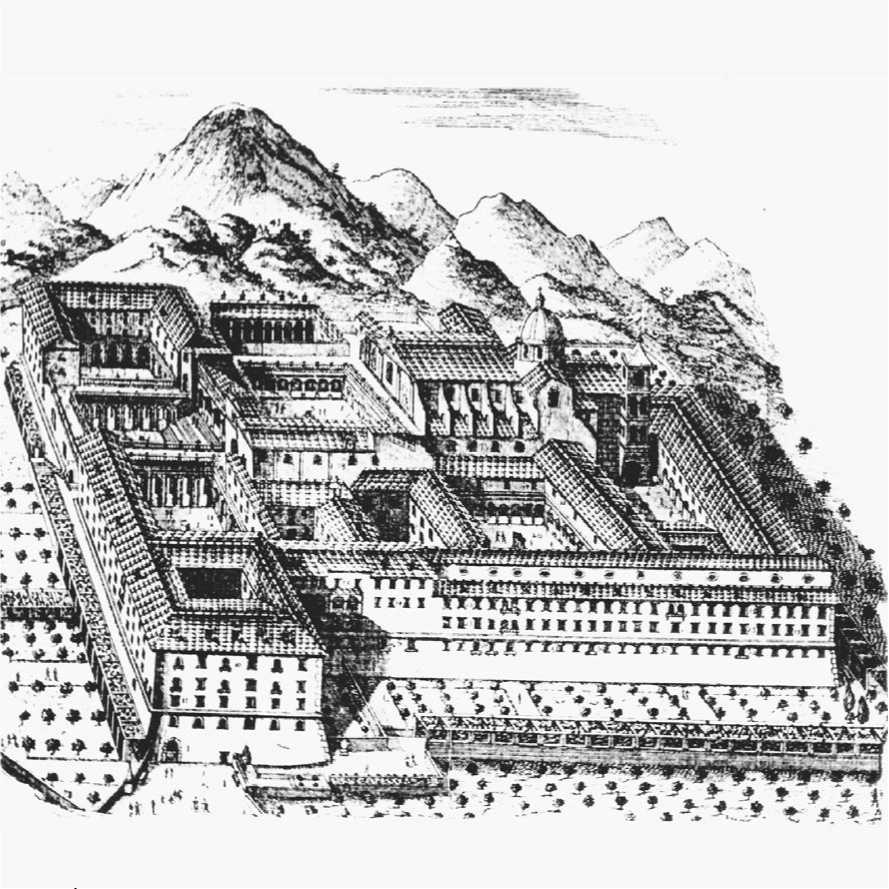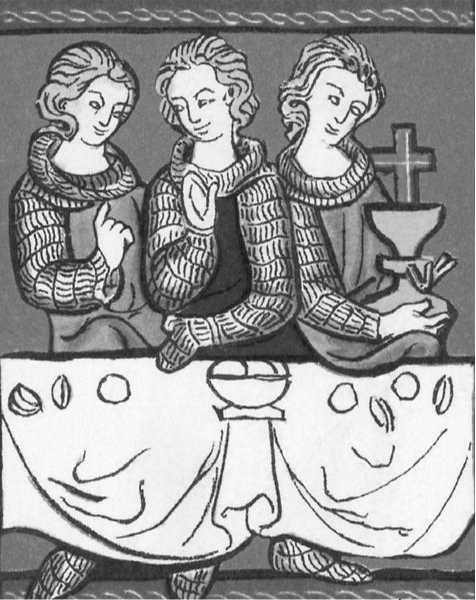The 500s saw the appearance of two key figures in church history. The first was Benedict (c. 480-547), who established the tradition of monasticism (moh-NAS-ti-sizm), or the life of monks, men who leave the outside world to live in a monastery or cloister. There had been monks before Benedict, and indeed the idea of the ascetic (uh-SET-ik)—someone who gives up comfort to pursue spiritual wisdom—is an old one. Before Benedict, however, monks and ascetics were inclined to be undisciplined, practicing what amounted to self-torture. Benedict called for an end to such excesses.
In 529, Benedict and his followers demolished a pagan temple to build Monte Cassino, a high mountain retreat where they established the Benedictine (ben-uh-DIK-teen) Order. Not only were they the first true order of monks, and one that exists today, the Benedictines were the first to require that their members swear vows. Thus a man wanting to become a monk would live in the monastery,

Monte Cassino was built by Benedict and his followers in 529. The Benedictine Order was the first true order of monks, and it still exists today. Reproduced by permission of the Corbis Corporation.
Enduring all kinds of hardships; then if he chose to go on, after a time he would take the vows. Among the things monks vowed to give up were sex, laughter, and possessions. They agreed to eat only one meal a day in
Winter and two in summer when days were longer; to speak only when necessary; to walk with their eyes turned to the ground; not to joke or laugh; and to let their sleep be interrupted for prayer.

This image depicts the Holy Grail, the cup Jesus drank from the night before he was crucified. This religious relic has never been found. Reproduced by permission of the Corbis Corporation.
Benedictine monasteries spread throughout Europe; meanwhile, the tradition of nuns and convents developed for women who chose to take vows of poverty and chastity. According to legend, the first convent was founded by Benedict's twin sister, Scholastica, near Monte Cassino in 530. Whatever the case, the first order of nuns was the Benedictine, and soon there were as many nuns as there were monks. Over the centuries that followed, these men and women would serve as a symbol of Christian meekness and kindness, often providing shelter and care for the poor. And at about the same time Benedict founded his order, another group of monks did nothing less than preserve Western civilization (see box, "How the Monks Saved Civilization").




 World History
World History









